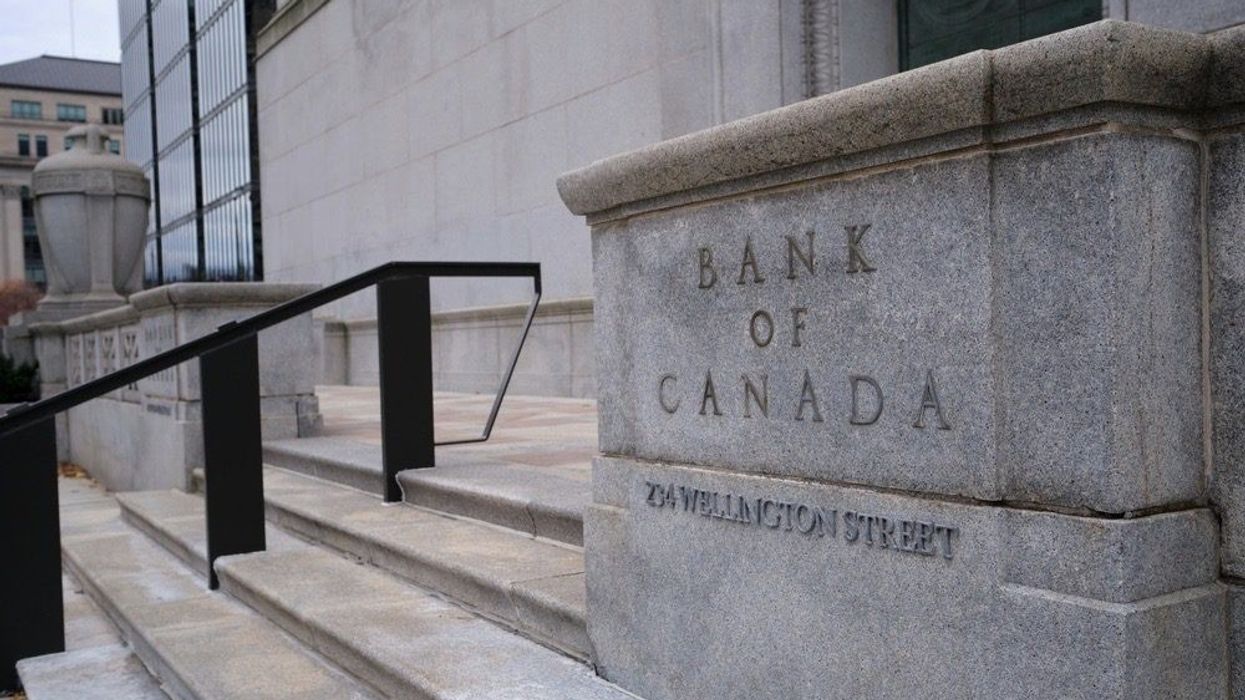The Canadian cost of borrowing has been rapidly increasing, as monetary policy makers hike rates in order to combat soaring inflation -- but is this pace set to become even more aggressive?
A full 1% rate hike from the Bank of Canada could be in the cards as early as June says Derek Holt, Head of Capital Economics at Scotiabank. In a client report earlier this week, Holt writes that given March’s hefty inflation reading of 6.7% -- the highest since 1991 -- the case has been made for a 0.75 - 1% increase.
“The fact that inflation is running amok should drive a minimum 50 basis point (bps) hike that we forecast at the next meeting in June. I had previously argued they should deliver a series of three 50bps moves,” he stated. “There is even a solid case for the BoC to hike by 75 - 100bps in one shot.”
A hike of such stature would bring the BoC’s trend-setting Overnight Lending Rate -- the benchmark used by consumer lenders when setting their Prime pricing -- to a range of 1.75 - 2% at a much faster clip than previously anticipated, and much closer to its eventual neutral rate of 2.75% - 3%. Analysts have generally posited that this should occur toward the end of this year or early next based on the BoC’s current hiking cadence.
In a Hurry to Hit Neutral
While Holt reiterates that Scotiabank’s official call for the rate remains at 0.5% for the June announcement, in his opinion, the BoC has been dragging its feet given the current inflationary climate.
“Monetary policy tailored to current conditions should already be at neutral — if not above — given where inflation is and with a full employment recovery as the economy has moved into excess aggregate demand,” he said.
“Having failed to deliver that outcome, the second best option would be to get to the mid-point of the two to three per cent neutral rate range this summer and preferably by July in my view.”
Should Holt’s take come to fruition, it would be the first 1% increase put forth by the Bank of Canada since August of 1991, when the target for the overnight lending rate sat at 5.75%. Prior to that, a hike of that size had not been seen since the hyper-inflationary days of 1979, when the Bank Rate sat at 14%.
READ: Big Banks Raise Prime Rate to 3.2% Following BoC Announcement
Consumers are already grappling with the steeper cost of borrowing following April’s 0.5% increase -- the largest since 2000 -- which is estimated to cost the average GTA variable borrower an additional $156 in mortgage carrying costs. However, compounded with sky-high inflation -- and given that fixed mortgage rates are also steadily on the rise -- the impact of rate hikes is already reflected in Canadian spending power.
A survey released by MNP Ltd. in partnership with Ipsos found that 52% of Candians are already feeling the impact of rate hikes, with a full 49% saying they’re $200 away from not being able to make ends meet within the next year. An additional 31% say they currently don’t earn enough to pay for their household bills and debt obligations.
Higher Rates Already Chilling Housing Market
This is also being felt keenly in the Canadian housing market, which has notably chilled following the April half-point hike.
“There’s definitely a shift happening in the market, a correction from the highs of the last couple of months,” says Sung Lee, RATESDOTCA expert and licensed mortgage agent. “Offers are going in below list price. Anecdotally, we are hearing of a slowdown in showings and a rise in terminated listings. Sellers don’t quite have the advantage they’ve had previously.”
Lee points out that while variable rates are the focus of the BoC rate hikes, fixed rates have continued to see hikes in response to the rise in bond yields. Fixed purchase rates range from 3.54% to 3.94% while fixed refinance rates range from 3.99%-4.54%. In contrast, variable rates range from 2.15% to 2.60% for purchases and 2.50% to 3.20% for refinances.
Many borrowers will now need to qualify above the 5.25 per cent stress test rate, lessening the amount of mortgage they can afford. It won’t be much longer before we see this benchmark rate increase also.
“The increase in the qualifying rate will impact the maximum mortgage amount for all borrowers. The hardest hit will likely be first-time homebuyers who are already struggling to get into this inflated real estate market,” Lee adds.





















